Being Jew in Italy: The Ghetto of Venice
In March 1516, the Council of Ten of the Venetian Republic decreed the formation of the first ghetto in western world.
“The Jews must live together in the houses that stand near San Girolamo. And so that they donot go about at night, let two gates be made, one on each side of the Old Ghetto where there is a small bridge, and one on the other side of the bridge—that is, one gate for each place. And let these gates be opened in the morning at the ringing of the Marangona [the main bell of St. Mark’s Basilica] and locked at midnight by four Christian gatekeepers, appointed and paid by the Jews themselves at a rate that our Council decides fair . . .”
So began the history of one of Europe’s most melancholy and tragic institutions. Many people today know that the ghetto of Venice to be the first of its kind; they may not know that the history of the Jews in Venice predates the ghetto.
Documents prove that Jews were trading in Venice as early as the 10th century. There is some evidence that Jews had lived in the Giudecca quarter (formerly called the Spinalonga) between the 11th and 13th centuries. Oral tradition in the Venetian Jewish community holds that there were two synagogues in the Giudecca (demolished as late as the 18th century), and a plaque with Hebrew inscription was found in the Giudecca near the church of the Zitelle in the 19th century. Despite common prejudice and anti-Semitism, medieval political authorities soon came to recognize that the Jews could bring invaluable commercial ties with the near east and important revenue into the city-state.
In 1385, the Venetian Senate invited German Jewish moneylenders to the city. This was soon followed a year later by a
concession of land on the Lido for a Jewish cemetery.
But the relationship, even if mutually beneficial, was fraught with obstacles.
Jews were permitted in the city only for fixed lengths of time and obligated to wear a yellow circle sewn onto their coats. Increasing numbers of Jews arrived in the first decade of the 16th century, stimulating an increase in bigotry flamed by the certain orders of the Catholic Church. Hence the formation of the ghetto in 1516. (The Papal State, not to be outdone, instituted its version of the ghetto in 1555.)
There is still philological debate over the origins of the word itself. Many hold that the word derives from the Venetian word “getar” (to throw or smelt) because of the old foundry that had been on the site. Others hold that the word comes from the German “gitter” (iron grill) or the Hebrew “get” (divorce). All agree that the area was far from ideal: there were prisons nearby as well as the monastery of San Girolamo (whose monks were responsible for the burial of executed criminals).
The ghetto was created not just to separate Jews from Christians while permitting the Venetian Republic to enjoy their financial contributions, but also for a theological reason. According to certain currents of Christian theology, the Messiah’s promised second coming would not transpire before the mass conversion of the Jews to Christianity. Hence, the ghetto also saw the practice of the “predica forzata” where Jews were forced to attend sermons – often given by converts – that demanded their conversion to Christianity.
Venetian Jews not working in the financial sector, printing or medicine (Jewish doctors were permitted to leave the ghetto in the evening under escort) were reduced to the “strazzaria,” hence the stereotype of the Jewish rag-pickers dealing in used textiles and clothing.
An influx of Levantine Jews in the mid 16th century, bringing different customs of worship and dress, created a contrast with their more modest Ashkenazi brethren. They were followed by Roman Jews in 1575 and Sephardic Jews in 1589. Soon the ghetto was so crowded that authorities and scholars estimate there was only two square meters per inhabitant. Denied permission to build outward beyond the ghetto, the Jews built vertically, with the result of eight- and nine-story buildings, most of which were not structurally sound. The Ghetto Vecchio was expanded into a Ghetto Novo and eventually a Ghetto Novissimo (1633). In such a small space, there are actually no less than 5 distinct schools or shuls: the Scuola Tedesca (1528), the Scuola Canton (1531), the Scuola Levantina (1541), the Scuola Italiana (1575), and the Scuola Spagnola (1580). Today, a visitor is struck by the presence of Lubavitcher Jews and images of Brooklyn’s Rabbi Menachem Schneerson, who died in 1994.
Although rather small compared to other centers of Jewish life in Europe, the Jewish community of Venice was intellectually and culturally distinguished for centuries. Among the luminaries are Elia Levita (grammarian), poetess Sara Copio Sullam, and the rabbis Leone da Modena and Simone Luzzato. Venetian Jews were permitted to study at the prestigious Università di Padova and Venice became a center of Jewish scholarship and, with the arrival of Daniel Bomberg from Antwerp, the printing trade. Meir Magino was a famous glassmaker from the ghetto while Margherita Grassini Sarfatti was a noted journalist, critic, patroness of the avant-garde (and Mussolini’s mistress).
Setbacks were common: bubonic plague passed through several times (a mass grave in the Jewish cemetery on the Lido says simply: “EBREI 1631.” The Counter-Reformation proved particularly difficult, as when Pope Julius II ordered the destruction of the Talmud in 1553 and Venetian authorities responded with a mass bonfire in Piazza San Marco. The messianic movement of Sabbatai Zevi in the mid-17th century divided Venetian Jews and by 1737 the community was forced to file for bankruptcy.
The Enlightenment and Risorgimento improved conditions within and outside the ghetto. Napoleon’s soldiers literally pulled down the gates of the ghetto (1797) and emancipation permitted the Jews to participate fully in the Risorgimento, especially the Pincherle, Treves and Pesaro families (whose monumental tombs are easy to find in the Cimitero Ebreo.)
The first decade of fascism saw an uneasy truce between the new regime and the community; this was shattered in 1938 with the passage of the Racial Laws. By that time, the population of the ghetto had dwindled to a mere 1200. World War II was to bring tragedy. When, in September 1943, Italy switched sides and the Germans occupied Venice, almost all Jews, including the elderly and almost blind chief rabbi, Adolfo Ottolenghi, were deported to concentration camps and murdered.
Today, the community numbers some 500 and the ghetto’s most striking features are the two monuments to the Holocaust by Arbit Blatas and the omnipresent Carabinieri. But with a vibrant intellectual and cultural life, a kindergarten, a retirement home (casa di riposo), a bakery, a library, a museum established in 1954, and numerous thriving shops, the ghetto of Venice is a living monument to over 500 years of history.
Information for this essay was derived from the website of the Comunità Ebraica di Venezia at www. Jvenice.org and the Museo Ebraico di Venezia at www.museoebraico.it
Stanislao G. Pugliese
Professor of History
Queensboro Unico Distinguished Professor of Italian and Italian American Studies
Hofstra University
































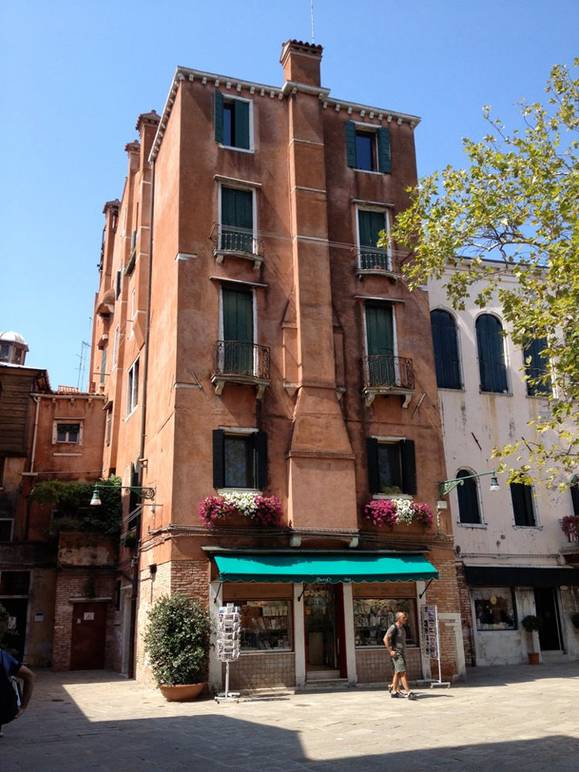
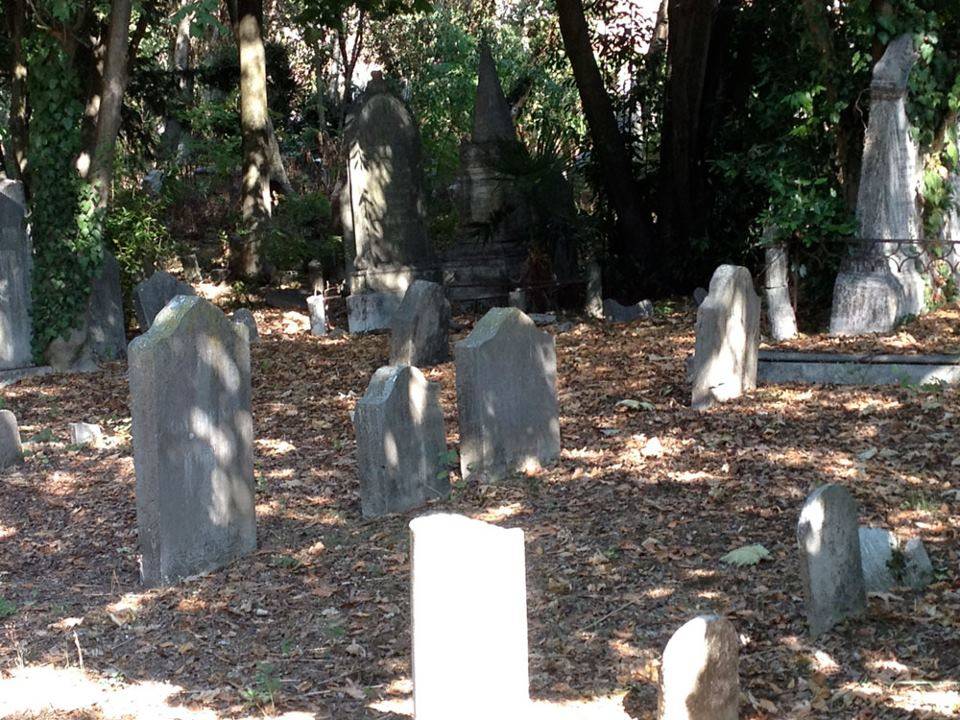
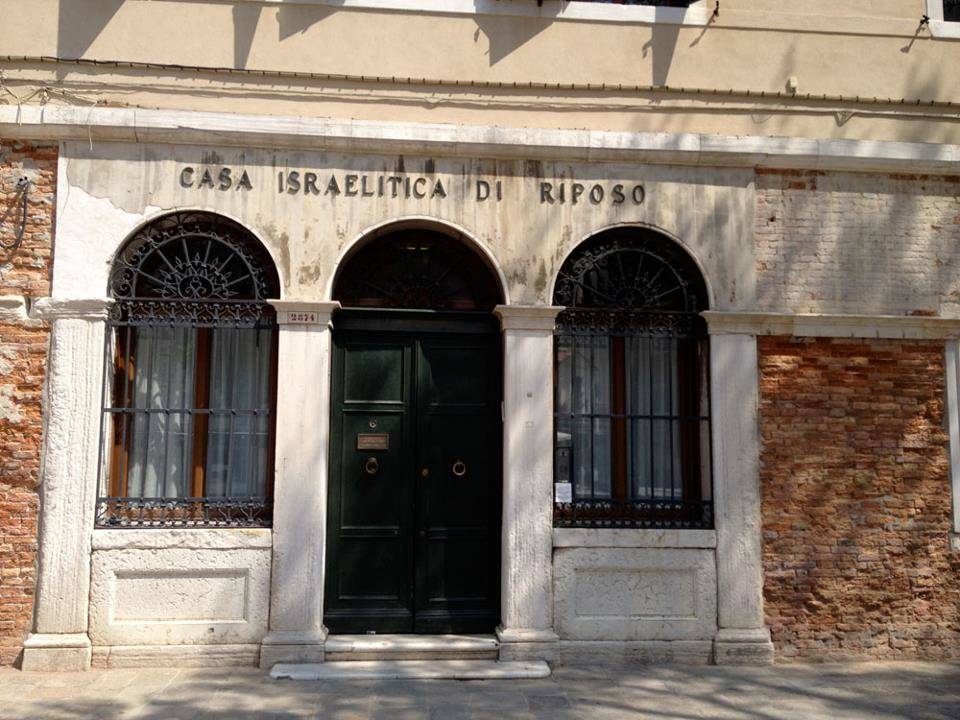
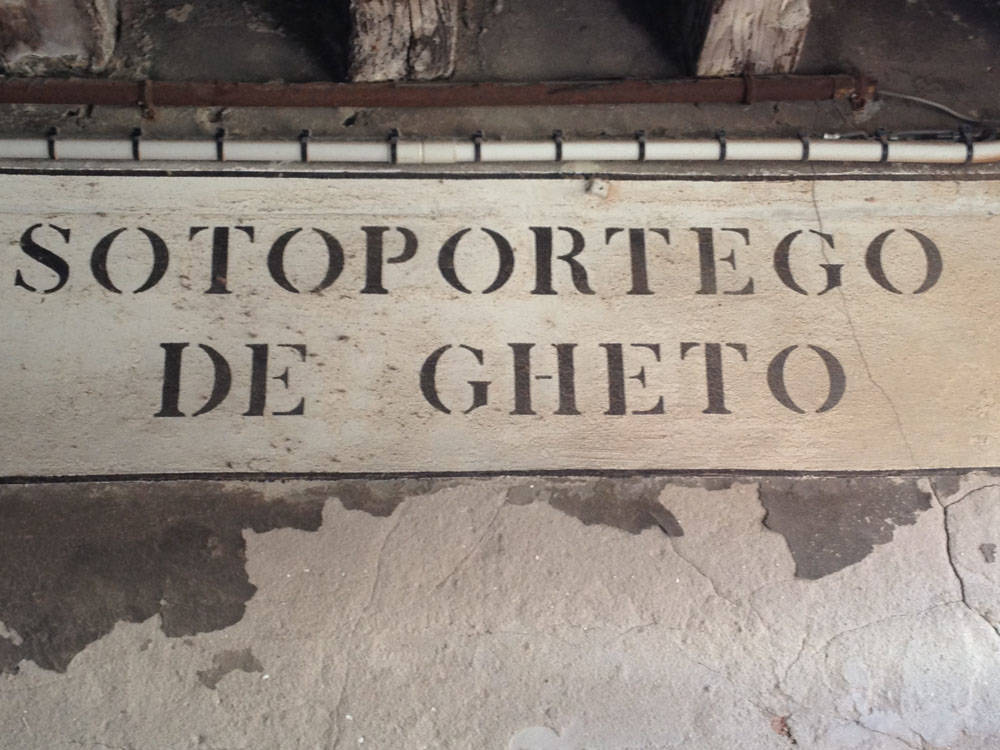
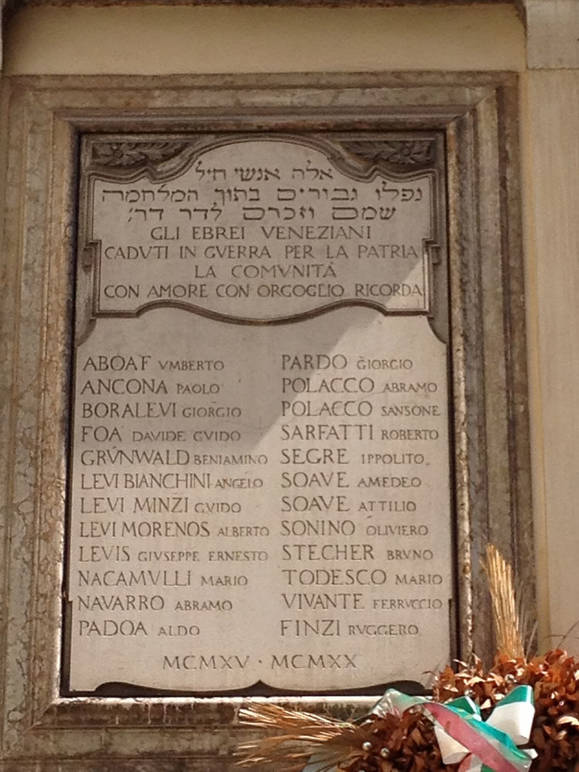
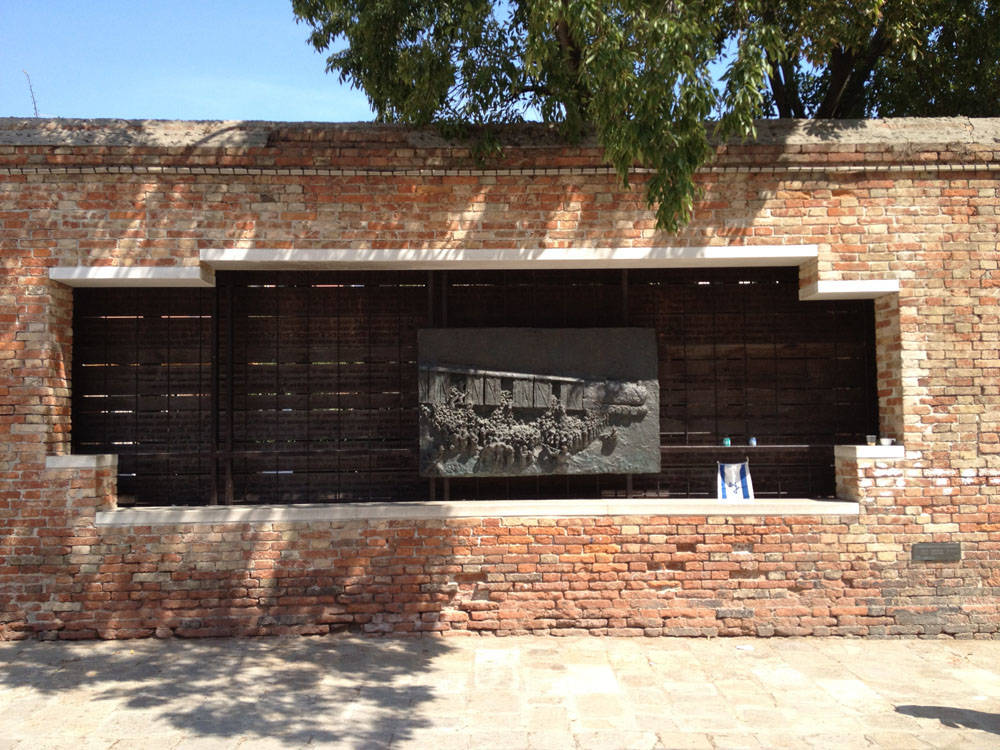



i-Italy
Facebook
Google+
This work may not be reproduced, in whole or in part, without prior written permission.
Questo lavoro non può essere riprodotto, in tutto o in parte, senza permesso scritto.